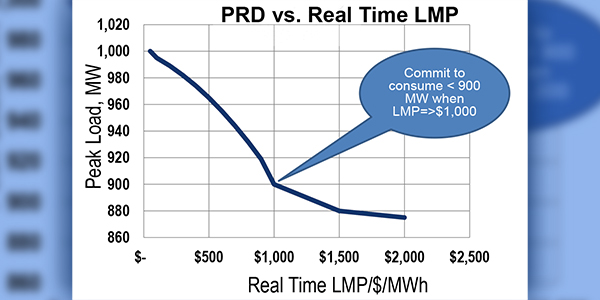By Rich Heidorn Jr.
FERC on Thursday rejected a PJM proposal to reduce load-serving entities’ savings from price-responsive demand (PRD) programs (ER19-1012).
PJM had proposed changing the calculation of the “nominal PRD value,” used for determining the PRD credit, from the reduction in load during the RTO’s annual peak to the lesser of summer and winter load reductions. The rule change was approved by stakeholders in December. (See “PRD Review for Capacity Performance Requirements,” PJM MRC/MC Briefs: Dec. 6, 2018.)
The RTO said it was attempting to correct disparities between PRD and Capacity Performance resources. It said that although PRD is not required to perform annually, it can displace an annual CP resource in the capacity auction. It also said the trigger for nonperformance charges for PRD is a maximum generation emergency, a less frequent occurrence than an emergency action, the trigger for CP resources.
Exelon and the PJM Power Providers Group filed comments supporting the change.
But the commission sided with protests by the Independent Market Monitor and environmental organizations, who said the rules for PRD must be consistent with how LSEs are billed for capacity service — based on demand during PJM’s annual peak — because PRD is not a supply resource. State and consumer representatives had earlier questioned the changes. (See PJM Grilled on Price-Responsive Demand Rule Changes.)
The commission noted that PRD is limited to customers using dynamic retail rates, advanced metering and supervisory control to ensure the committed demand reductions are achieved.
“LSEs participating in PRD receive no energy payment other than reduced energy bills,” the commission said. “Similarly, LSEs receive a capacity service bill credit (the PRD credit) … based on nominal PRD value, which reflects the reduction in the LSE’s demand during PJM’s annual peak.”
The environmental organizations — the Natural Resources Defense Council’s Sustainable FERC Project, Earthjustice, Sierra Club and the Union of Concerned Scientists — offered an example to make their case: a PRD location with 100-MW peak summer load without PRD, a 75-MW summer load with PRD and an 85-MW peak winter load.
The location would get credit for reducing capacity needs by only 10 MW under PJM’s proposal, based on the lower winter load (85-75 MW), rather than the full 25-MW reduction.
“We find that PJM has not shown that it is just and reasonable to calculate the nominal PRD value and associated PRD credit based on the lesser of summer and winter load reductions,” the commission said. “We agree with the IMM and [environmental organizations] that PJM’s proposed approach would limit the amount of megawatts that PRD can commit and thereby inaccurately reflect PRD’s load-reduction capabilities.
“In light of our finding that it is unjust and unreasonable to calculate the nominal PRD value in a manner inconsistent with how an LSE’s capacity obligation is determined, we do not find it necessary to address the need for consistency between the PRD requirements and the requirements for capacity resources,” the commission added.
Tom Rutigliano, senior advocate for the Sustainable FERC Project, praised the ruling.
“A kilowatt of electricity saved is a kilowatt of dirty fossil-fuel energy not burned,” he said. “PJM has been trying to deny that demand response is a substitute for power plants, and the FERC decision today puts that wrongheaded argument to rest. FERC’s action keeps summer demand response in and removes the sword that’s been hanging over the market for this zero-emissions product.”
PJM spokesman Jeff Shields said the RTO is evaluating the order to determine its next steps. “PJM believes that consumers have benefited greatly from competition facilitated through its wholesale markets, and that all resources should compete on a level playing field,” he said. “This means that all resources competing in the market must provide the desired product on a comparable basis. PJM’s proposal would have leveled the playing field with respect to PRD as compared to demand response and generation resources.”




